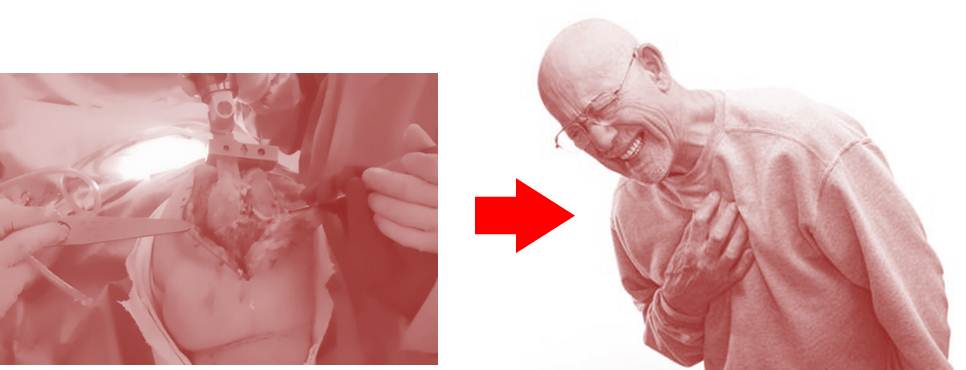Knee and Hip Joint Replacement Surgeries Dramatically Increase Heart Attack Risk
Knee replacement risks and hip replacement risks are accompanied by a myriad of complications, one of the most significant are clearly knee replacement heart attacks and hip replacement heart attacks. Several years ago we queried the National Sampling System for Medicare for a paper we were writing and found that in the year 2008 alone, there were 17,500 serious complications coded as related to knee replacement surgery. Among those were 5,000 deaths. These were in large part due to common knee surgery risks. Around our office, we call these surgeries the “amputation of a joint with insertion of prosthesis”. This week a study was published that again confirms the high degree of risks and complications seen with hip and knee replacement surgeries.
The conclusion? Among patients 60 and up, hip replacement patients were 25.5 times more likely to experience a a heart attack in the two weeks after surgery. For knee replacement patients it was 31 times more likely to have a heat attack! Yikes! This makes the increased risk of heart problems form taking NSAID drugs look mild. Why does this happen? Let’s go back to what we call these surgeries-“amputation with insertion of prosthesis”. When you completely chop out a joint from a patient there is severe trauma to the blood vessels and bone marrow space. This likely leads to a higher risk of blood clots, some of which may make it to the heart. In addition, for some patients, the stress of undergoing the joint amputation may be enough alone. The upshot? Try your best to avoid a hip or knee replacement, and therefore the knee replacement risks and hip replacement risks, or as they say in the Hunger Games books, “May the odds be ever in your favor…”

NOTE: This blog post provides general information to help the reader better understand regenerative medicine, musculoskeletal health, and related subjects. All content provided in this blog, website, or any linked materials, including text, graphics, images, patient profiles, outcomes, and information, are not intended and should not be considered or used as a substitute for medical advice, diagnosis, or treatment. Please always consult with a professional and certified healthcare provider to discuss if a treatment is right for you.

